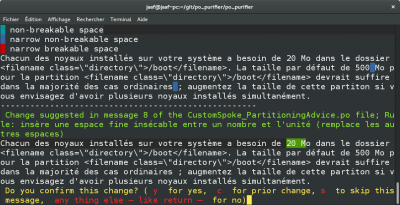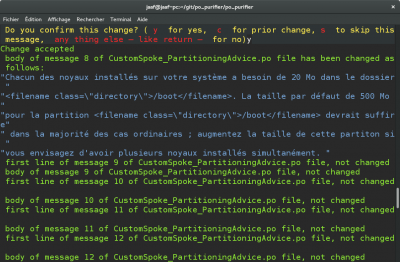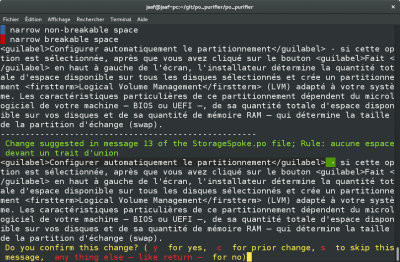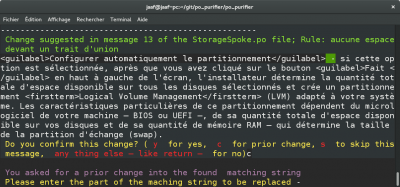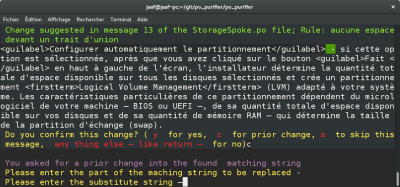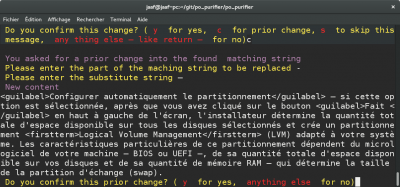< L10N
Description of the tool
This tool is a python script that can be found at https://github.com/jaaf/po_purifier. It scan a directory for .po files. For each file, it checks translated messages against typographic rules that reside in a configuration file nammed typorules.py. Each time a typographic rule is not satisfied, the program stops and ask the user what to do. The figure 1 below shows how it looks like :
- The message to the user, that appears in English here, normally appears in the user's language, provided that the program has been localized. It has 2 parts:
- The first part that tells the user a typo rule is infringed and that he has to decide for change or not (it is part of the program and has to be localized)
- The typo rule itself (it belongs to the typorules.py file)
- In this case the French typo rule requires a narrow no break space between a value and its unit and the location of the fault is shown with a green highlight.
- To help the user, the message is shown twice. First with the various spaces colorized according to their type then with the typo fault highlighted.
The figure 2 below shows what happens after the user has accepted the change.
- The message Change accepted is displayed.
- The corrected message is displayed in blue color.
- Then the program informs the user it has not changed some message because no typo faults were detected. It should do likewise till the next fault detection.
The figure 3 below shows a case where the user could use the c (for prior change) option. Indeed, we can see that an hyphen has been used in place of a semi-em dash. In French the spacing rules for hyphen and semi-em dash are different. An hyphen requires no space between the previous and the following word, while a semi-em dash requires a spaces for both. It appears that changing the hyphen with a semi-em dash is the best solution here.
The following figures show how the process occurs.

